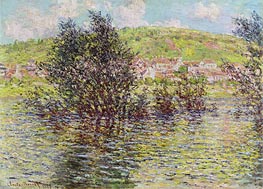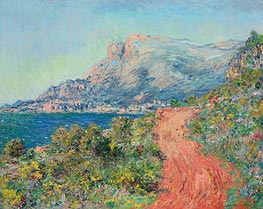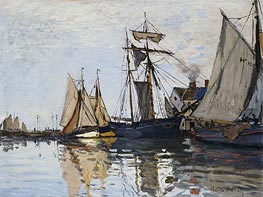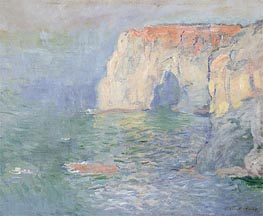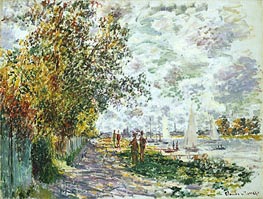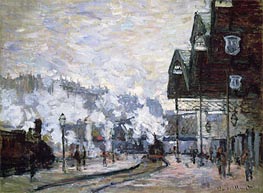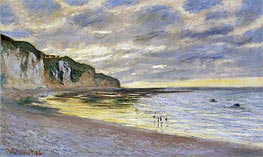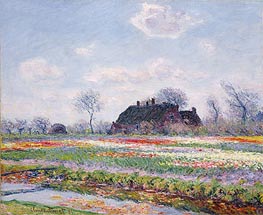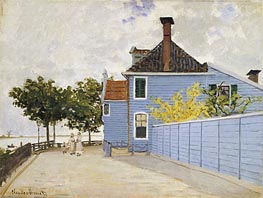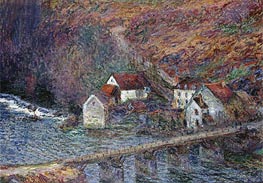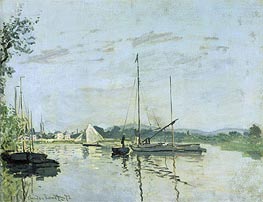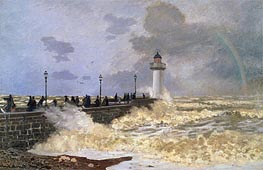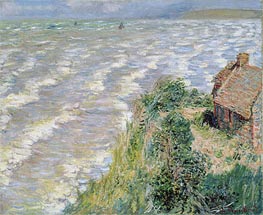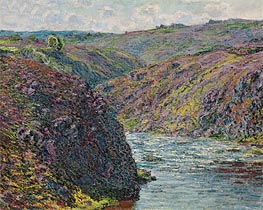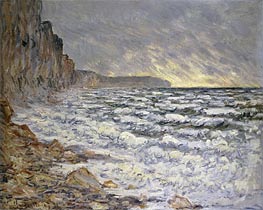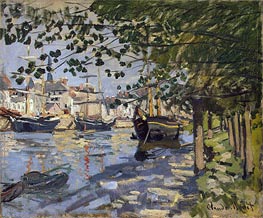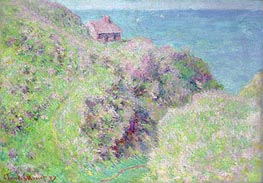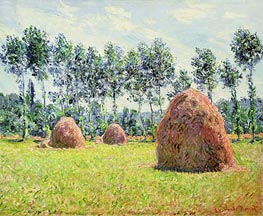Landscape Painting Reproductions - Page 130
Landscape painting is a genre of art that depicts outdoor scenes, such as mountains, forests, rivers, and gardens. The history of landscape painting dates back to ancient times, with examples from ancient Egyptian, Greek, and Roman art. During the Middle Ages, landscape paintings were mainly used as backgrounds for religious scenes, and it was not until the Renaissance that landscape painting emerged as a separate genre.
During the Renaissance, artists started to focus more on the natural world and began to experiment with perspective, light and shadow, and atmospheric effects in their landscapes. This period also saw the rise of topographical painting, which depicted accurate views of specific locations. During this time, artists such as Leonardo da Vinci and Albrecht Dürer produced iconic landscape paintings.
The 17th century Dutch Golden Age saw a trend towards landscapes that were more genre-like and less topographical, with scenes of everyday life and landscapes with rolling hills, waterways, and windmills. This period is also known for the development of the "Dutch light" style, which was characterized by a luminous, highly transparent quality of light and a preference for sunny skies. Painters such as Jan van Goyen and Jacob van Ruisdael became renowned for their realistic landscapes.
In the 18th and 19th centuries, Romanticism and the interest in the Sublime in art and literature led to a focus on dramatic, awe-inspiring landscapes. Painters such as J.M.W. Turner and Caspar David Friedrich used dramatic light, color, and form to evoke a sense of awe and drama in their landscapes.
The Impressionist movement of the late 19th century was characterized by its loose brushwork, light color palette, and emphasis on capturing the fleeting effects of light and atmosphere. Impressionist landscapes, such as those by Claude Monet and Pierre-Auguste Renoir, often depicted modern life, with leisurely scenes of parks, gardens, and the countryside.
Throughout the 20th century, landscape painting continued to evolve and diversify, with many artists pushing the boundaries of the genre through new styles and techniques. Some notable examples include the abstract landscapes of artists such as Mark Rothko and Joan Mitchell, and the photorealistic landscapes of Richard Estes and Ralph Goings.
Overall, landscape painting has a rich and varied history, reflecting the changing attitudes and perspectives of different cultures and time periods.
During the Renaissance, artists started to focus more on the natural world and began to experiment with perspective, light and shadow, and atmospheric effects in their landscapes. This period also saw the rise of topographical painting, which depicted accurate views of specific locations. During this time, artists such as Leonardo da Vinci and Albrecht Dürer produced iconic landscape paintings.
The 17th century Dutch Golden Age saw a trend towards landscapes that were more genre-like and less topographical, with scenes of everyday life and landscapes with rolling hills, waterways, and windmills. This period is also known for the development of the "Dutch light" style, which was characterized by a luminous, highly transparent quality of light and a preference for sunny skies. Painters such as Jan van Goyen and Jacob van Ruisdael became renowned for their realistic landscapes.
In the 18th and 19th centuries, Romanticism and the interest in the Sublime in art and literature led to a focus on dramatic, awe-inspiring landscapes. Painters such as J.M.W. Turner and Caspar David Friedrich used dramatic light, color, and form to evoke a sense of awe and drama in their landscapes.
The Impressionist movement of the late 19th century was characterized by its loose brushwork, light color palette, and emphasis on capturing the fleeting effects of light and atmosphere. Impressionist landscapes, such as those by Claude Monet and Pierre-Auguste Renoir, often depicted modern life, with leisurely scenes of parks, gardens, and the countryside.
Throughout the 20th century, landscape painting continued to evolve and diversify, with many artists pushing the boundaries of the genre through new styles and techniques. Some notable examples include the abstract landscapes of artists such as Mark Rothko and Joan Mitchell, and the photorealistic landscapes of Richard Estes and Ralph Goings.
Overall, landscape painting has a rich and varied history, reflecting the changing attitudes and perspectives of different cultures and time periods.
page 130 of 275
SKU: MCL-10929
Claude Monet
Original Size: 60 x 81 cm
Musee d'Orsay Paris France
Claude Monet
Original Size: 60 x 81 cm
Musee d'Orsay Paris France
SKU: MCL-10928
Claude Monet
Original Size: 66.1 x 82 cm
Private Collection
Claude Monet
Original Size: 66.1 x 82 cm
Private Collection
SKU: MCL-10927
Claude Monet
Original Size: 65.5 x 81.3 cm
The Clark Art Institute Massachusetts USA
Claude Monet
Original Size: 65.5 x 81.3 cm
The Clark Art Institute Massachusetts USA
SKU: MCL-10926
Claude Monet
Original Size: unknown
Private Collection
Claude Monet
Original Size: unknown
Private Collection
Etretat: The Manneport, Reflections on the Water 1885
Claude Monet
Oil Painting
$541
$541
Canvas Print
$52.41
$52.41
SKU: MCL-10925
Claude Monet
Original Size: 65.8 x 81.5 cm
Musee d'Orsay Paris France
Claude Monet
Original Size: 65.8 x 81.5 cm
Musee d'Orsay Paris France
SKU: MCL-10924
Claude Monet
Original Size: 53 x 71 cm
Private Collection
Claude Monet
Original Size: 53 x 71 cm
Private Collection
SKU: MCL-10923
Claude Monet
Original Size: 60 x 73 cm
Musee Marmottan Monet Paris France
Claude Monet
Original Size: 60 x 73 cm
Musee Marmottan Monet Paris France
SKU: MCL-10921
Claude Monet
Original Size: unknown
Private Collection
Claude Monet
Original Size: unknown
Private Collection
SKU: MCL-10920
Claude Monet
Original Size: 60 x 80 cm
Private Collection
Claude Monet
Original Size: 60 x 80 cm
Private Collection
SKU: MCL-10919
Claude Monet
Original Size: unknown
Private Collection
Claude Monet
Original Size: unknown
Private Collection
SKU: MCL-10918
Claude Monet
Original Size: 59.7 x 73.2 cm
The Clark Art Institute Massachusetts USA
Claude Monet
Original Size: 59.7 x 73.2 cm
The Clark Art Institute Massachusetts USA
SKU: MCL-10917
Claude Monet
Original Size: 81.3 x 64.8 cm
Private Collection
Claude Monet
Original Size: 81.3 x 64.8 cm
Private Collection
SKU: MCL-10916
Claude Monet
Original Size: 48 x 63.2 cm
Private Collection
Claude Monet
Original Size: 48 x 63.2 cm
Private Collection
SKU: MCL-10915
Claude Monet
Original Size: 114.3 x 153.7 cm
Private Collection
Claude Monet
Original Size: 114.3 x 153.7 cm
Private Collection
SKU: MCL-10914
Claude Monet
Original Size: 65 x 92 cm
Musee Marmottan Monet Paris France
Claude Monet
Original Size: 65 x 92 cm
Musee Marmottan Monet Paris France
SKU: MCL-10913
Claude Monet
Original Size: 50 x 65 cm
Musee d'Orsay Paris France
Claude Monet
Original Size: 50 x 65 cm
Musee d'Orsay Paris France
SKU: MCL-10912
Claude Monet
Original Size: unknown
Private Collection
Claude Monet
Original Size: unknown
Private Collection
SKU: MCL-10911
Claude Monet
Original Size: unknown
Private Collection
Claude Monet
Original Size: unknown
Private Collection
SKU: MCL-10910
Claude Monet
Original Size: 66 x 81.3 cm
Brooklyn Museum of Art New York USA
Claude Monet
Original Size: 66 x 81.3 cm
Brooklyn Museum of Art New York USA
SKU: MCL-10909
Claude Monet
Original Size: 65 x 81 cm
Musee des Beaux Arts Reims France
Claude Monet
Original Size: 65 x 81 cm
Musee des Beaux Arts Reims France
SKU: MCL-10908
Claude Monet
Original Size: unknown
Private Collection
Claude Monet
Original Size: unknown
Private Collection
SKU: MCL-10907
Claude Monet
Original Size: 54 x 65.5 cm
The State Hermitage Museum St. Petersburg Russia
Claude Monet
Original Size: 54 x 65.5 cm
The State Hermitage Museum St. Petersburg Russia
SKU: MCL-10906
Claude Monet
Original Size: 65 x 92 cm
Private Collection
Claude Monet
Original Size: 65 x 92 cm
Private Collection
SKU: MCL-10905
Claude Monet
Original Size: 65 x 80 cm
Private Collection
Claude Monet
Original Size: 65 x 80 cm
Private Collection
